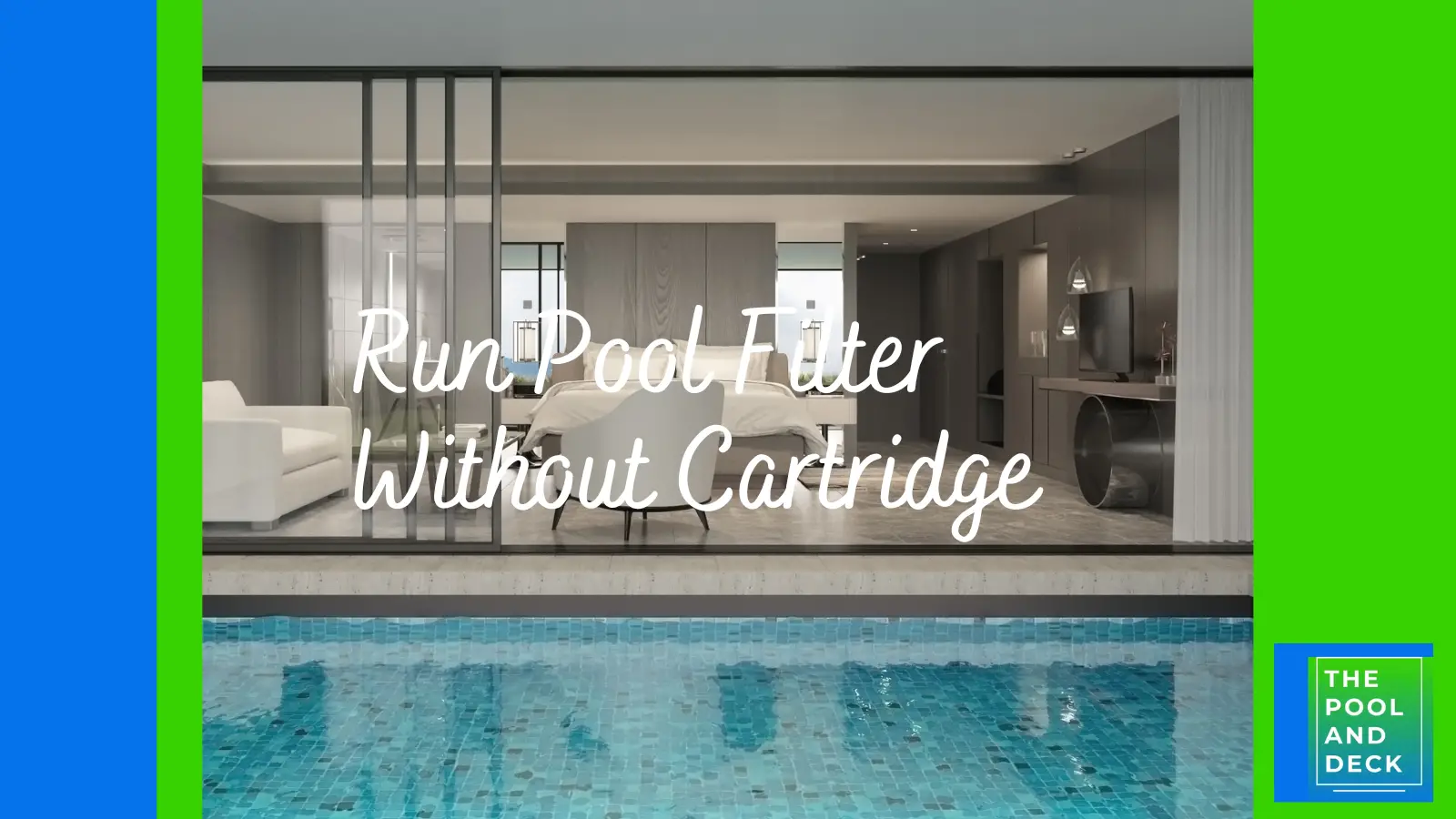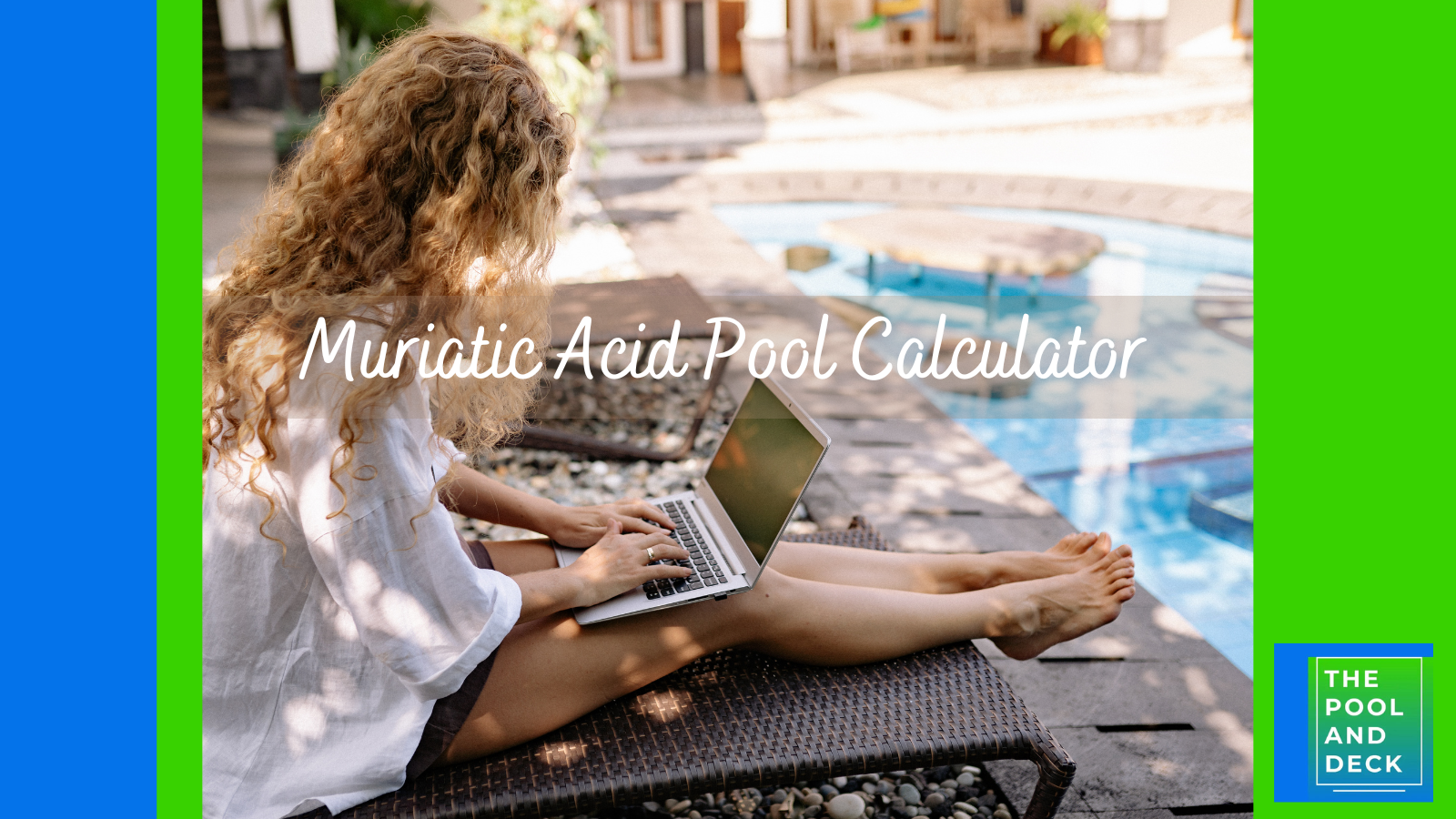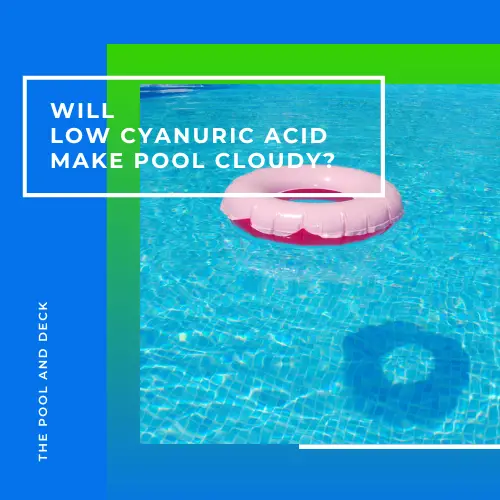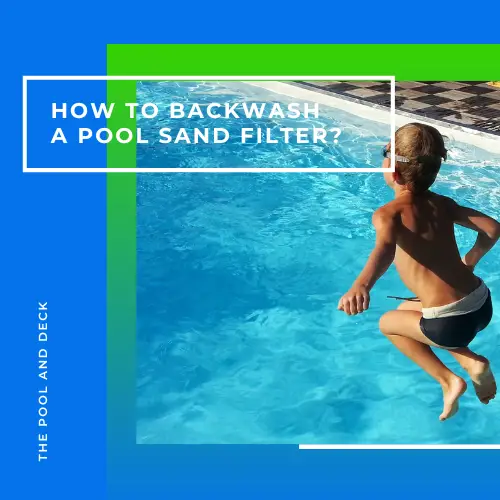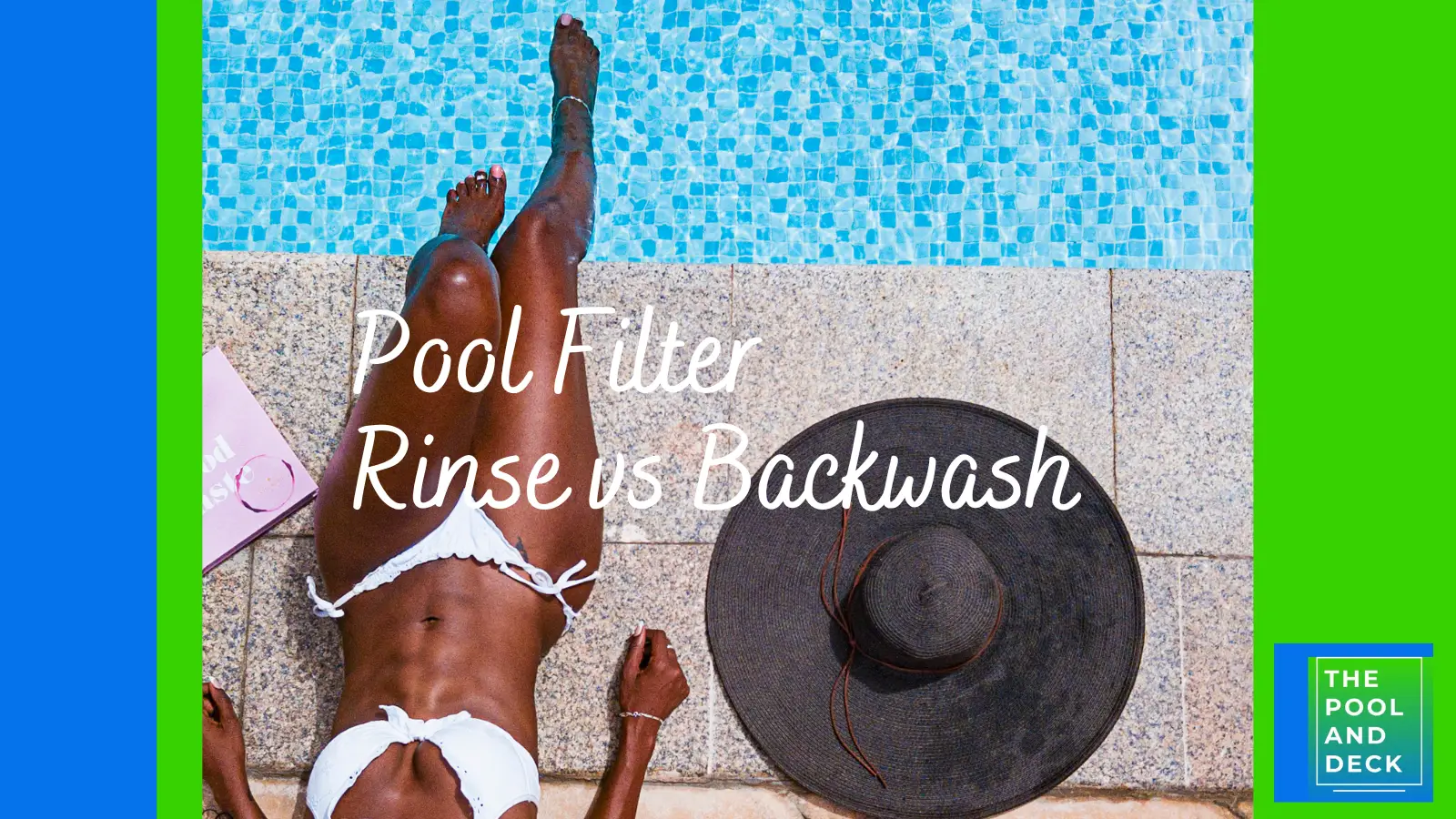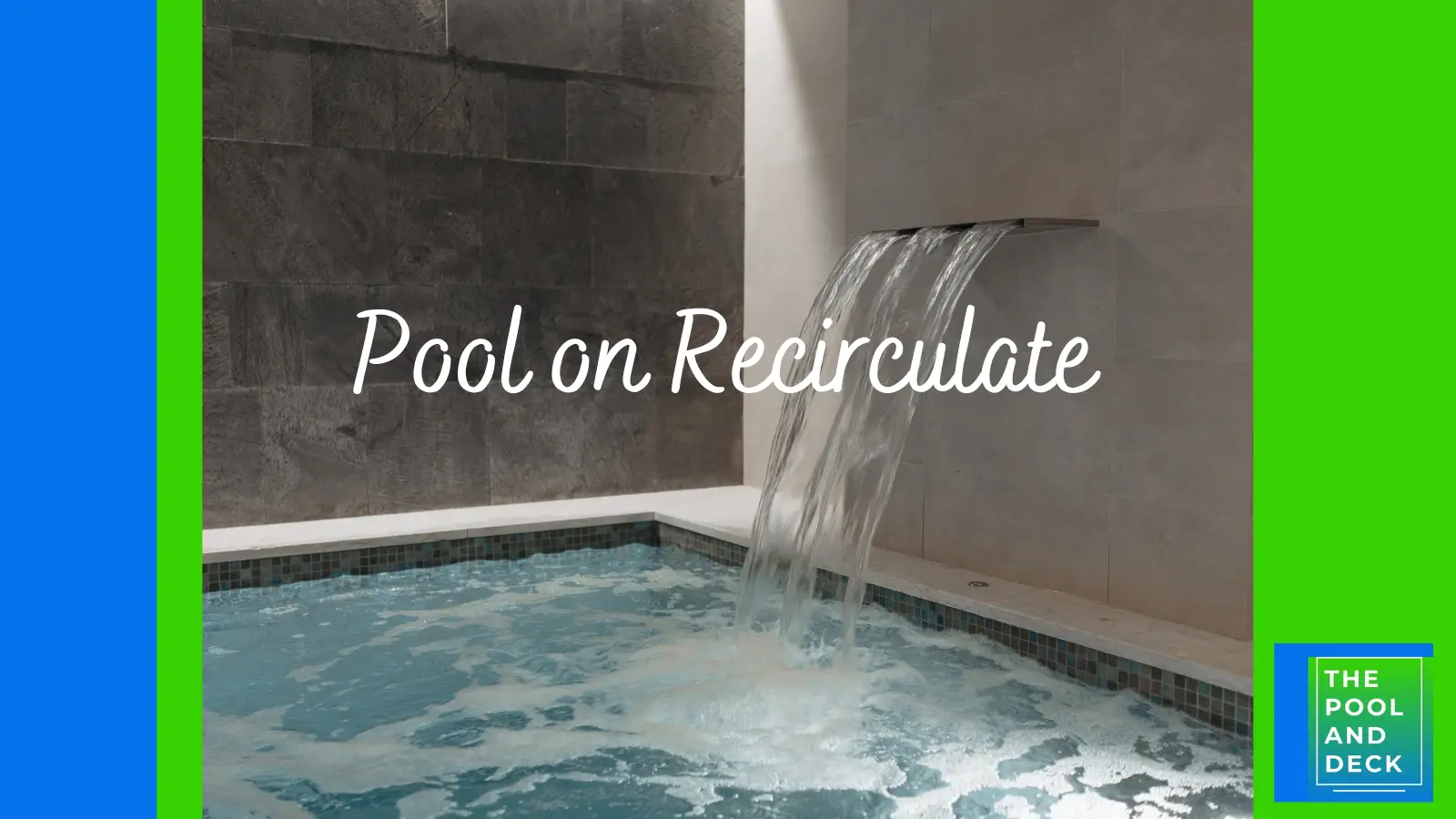CYA And Free Chlorine: Important Stuff You Need To Know!
As an Amazon Associate, I earn from qualifying purchases.
Table of Contents
Does CYA Increase Free Chlorine?
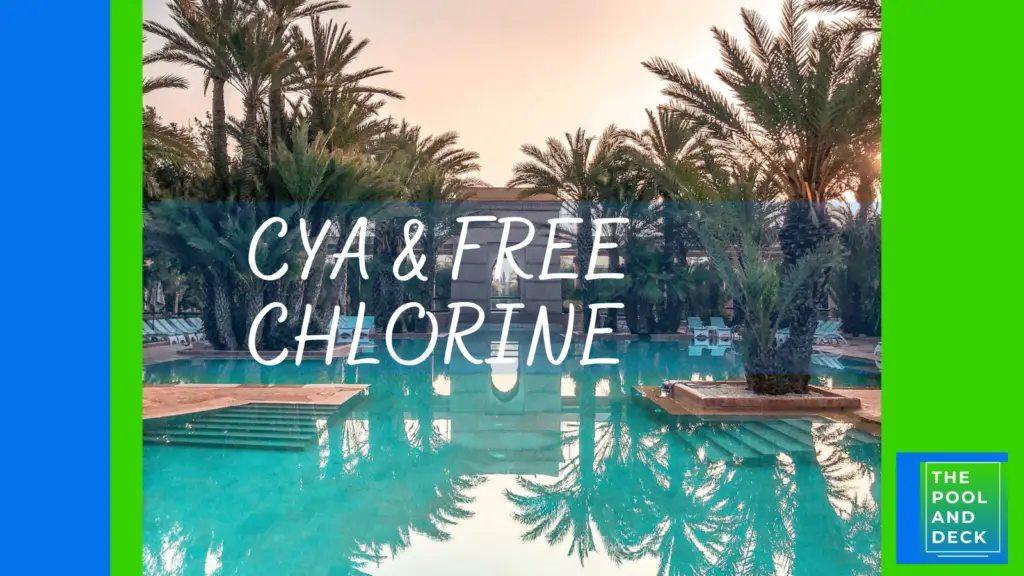
Most likely you use Chlorine to keep your pool sanitized. But it is “Free Chlorine (FC)”, not Chlorine, that kills algae, bacteria & germs. Unfortunately, FC depletes fast under UV rays from the sun. You need to add CYA to protect Free Chlorine. So, Does CYA Increase Free Chlorine?
CYA does not increase Free Chlorine (FC). CYA helps Free Chlorine (FC) stay within the recommended range of 2-4 ppm for an outdoor pool. Without the right dose of CYA, Free Chlorine (FC), would deplete by 50% in just 45 minutes.
Chlorine is added to the pool as tablets, granules or in liquid form. Irrespective of the brand, the active ingredient in all chlorine tablets is “Trichlor” (Trichloro-S-Triazinetrione). The active ingredient in granular chlorine is “Dichlor” (Sodium Dichloro-S-Triazinetrione).
Both “Trichlor” and “Dichlor” are chlorine salts. When they come in contact with swimming pool water they become HOCl (hypochlorous acid) and OCl- (hypochlorite ion), which is Free Chlorine (FC).
Free Chlorine (FC) is what kills the algae, bacteria & germs in your pool. Free Chlorine (FC), not Chlorine, is the sanitizer or disinfectant.
However, in day to day language, the terms “Free Chlorine” and “Chlorine” are used interchangeably and I may do the same, at times.
Free Chlorine (FC), especially when subjected to UV Radiation, is very unstable. Free Chlorine (FC) levels can drop by half in just 45 minutes. Start off with 4 ppm of FC and 45 minutes later you are down to 2 ppm. Another 45 minutes and your pool is at just 1 ppm.
Your pool would go from well sanitized to poorly sanitized in just 1 ½ hours. If it were not for CYA!
How Does Cyanuric Acid Protect Chlorine?
CYA protects Free Chlorine (FC) from UV rays by “locking” the unstable hypochlorite ion (OCL-) to the Nitrogen atom in CYA, through a weak bond.
Cyanuric Acid (CYA) is a chemical compound. The molecule is made up of 3 atoms each of Carbon, Nitrogen, Oxygen and Hydrogen. The chemical formula is C3N3O3H3.
The Carbon & Nitrogen atoms are arranged, alternatively, in a hexagonal ring. The hydroxyl (OH) group is attached to the Carbon atoms. (Refer to Fig 1 below).

The Nitrogen atoms in CYA can “lock” the hypochlorite ion (OCL-) ions through a weak bond. As long as the Chlorine atom is attached to the Nitrogen atom, it is not “free”. It is protected from the harsh UV rays of the sun.
When the CYA molecule, with the hypochlorite ion (OCL-) ions attached to it, gets into the vicinity of a pathogen, the hypochlorite ion (OCL-) ions disengage and “free chlorine” is available as a disinfectant.
The free chlorine enters the bacteria or algae cell and wrecks havoc on the protein chains inside. Before long the bacteria or algae is dead!
Is CYA Free Chlorine?
CYA is not Free Chlorine (FC). They are two separate chemicals. However, the Cyanuric Acid (CYA) level in your pool influences the Free Chlorine (FC) levels.
Other factors such as the pH level and the amount of contamination and sunlight falling on the pool also have a role to play.
The effectiveness of Free Chlorine (FC) in killing pathogens, such as bacteria and algae, is around 50% at a 7.5 pH (the recommended level).
Will CYA Go Down Over Time?
CYA levels in your pool do not go down over time. On the contrary, they keep rising.
Chlorine granules (dichlor) and chlorine tablets (trichlor) are commonly used to sanitize private swimming pools. They already have Cyanuric Acid (CYA) in their formula. Every time you add chlorine granules or tablets, you are automatically adding Cyanuric Acid (CYA) too.
The chlorine added to the pool is being spent in neutralizing the pathogens and being depleted by UV rays. So you need to keep adding chlorine to maintain Free Chlorine (FC) levels of between 2 and 4 ppm.
But the Cyanuric Acid (CYA) remains in the pool and the levels keep going up. A higher than recommended level (30-50 ppm) is not good.
You can keep the Cyanuric Acid (CYA) level in your pool in check by
- Shocking your pool more frequently. Shock does not add Cyanuric Acid (CYA) to the pool and reduces the use of chlorine granules or tablets, which have.
- Dilute the pool, whenever you can. Backwashing will clean up the filter, vacuuming will clean up the pool floor. Both will help get some of the pool water out of the system.
- Use a Cyanuric Acid (CYA) Reducer. See below for recommended product on Amazon.
For more information on Pool Chlorine Types refer to my post Complete Guide To Pool Chlorine Types. (What Is The Best?).
Recommended Swimming Pool Chemicals
Best Stabilizer and Conditioner
Rx Clear Stabilizer and Conditioner will reduce chlorine loss caused by the UV radiation from the sun. Adding stabilizer in the spring greatly increases chlorine effectiveness and will actually cut chlorine consumption. Rx Clear Stabilizer Contains 100% Cyanuric Acid. Order from Amazon using the link below:
Rx Clear Swimming Pool Stabilizer and Conditioner
Best 3″ Chlorinating Tablets
The HTH Super 3″ Chlorinating Tablets are an effective swimming pool water sanitizer. These convenient and easy to use tablets are formulated to protect against chlorine loss in direct sunlight and can be used in feeders. They are designed to dissolve slowly to provide a steady source of available chlorine. Order from Amazon using the link below:
HTH Pool Sanitizer 3″ Chlorinating Tablets 4-in-1, 20 lb
Best Multi-purpose Pool Shock
Aqua chem Shock Xtra Blue is suitable for use in all types of pools, including salt water pools, above-ground pools and inground pools. It kills algae, bacteria, and chloramines, effectively and fast. It will make your pool crystal-clear blue and sparkling clean again. Order from Amazon using the link below:
Aqua Chem 5-Pack Shock Xtra Blue for Swimming Pools, 5 Pounds
Best CYA Reducer
Bio-Active, a new biological and natural approach, has been proven to reduce Cyanuric Acid (CYA) levels by disintegrating it at the molecular level. It won’t cause adverse effects on your pool and is also non-toxic, non-polluting and completely biodegradable. Order from Amazon using the link below:
Bio-Active Cyanuric Acid Reducer
Thank you very much for reading the post. I do hope you found it informative and helpful.

